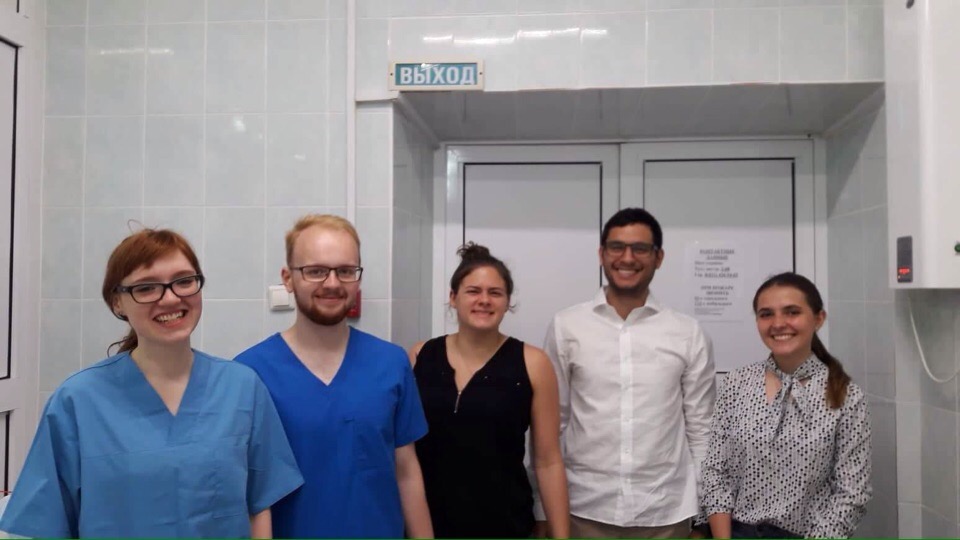HSE Students and Interns from Brazil Attend Brain Surgery with Intraoperative Speech Mapping

In July, HSE researchers conducted intraoperative language mapping during brain tumor removal surgery in Nizhny Novgorod. HSE students of Fundamental and Applied Linguistics, together with interns from Brazil, had the opportunity to attend the surgery.
Intraoperative testing was conducted by Nataila Gronskaya, Professor at the HSE campus in Nizhny Novgorod, and Andrey Zyryanov, researcher from the HSE Moscow Centre of Language and Brain. Students of Fundamental and Applied Linguistics in Nizhny Novgorod, Natalia Antonova and Nina Zdorova, attended the surgery. Medical students from Brazil, Bruno Alcantara Manica and Leticia Cavalaro Siqueira, who were doing a month-long internship at Moscow’s Centre of Language and Brain, came to learn about brain mapping.
What is a neurlolinguist’s task associated with such complicated surgery? Firstly, the linguists test the patient a day before the surgery, measuring their general language and speech competencies, and deciding what stimuli can used during the intraoperative testing. Linguists use tests developed by the HSE Centre of Language and Brain, primarily RAT (Russian Aphasia Test). During awake (or asleep-awake-asleep) surgeries, the initial and the final stages of the operation are conducted under general anesthetic (asleep), while the stimulation of certain brain areas, parallel patient testing, and the subsequent tumor removal are conducted while the patient is awake. If, during speech stimulation, the patient makes mistakes, then the area is vital for speech and should remain untouched, if possible. Thanks to collaboration with linguistics, doctors can remove the tumor and preserve the patient’s speech after the surgery.
Post-surgery, the patient goes through more testing. This test provides the linguists with the opportunity to assess the changes in the patient’s speech and language skills, and evaluate the success of their joint work.
During the surgery, neurosurgeons, linguists and anesthesiologists worked together efficiently and effectively, which is essential not only to ensure a positive outcome, but also to ensure the patient’s comfort.
After the surgery, the Russian and Brazilian students enjoyed a tour of Nizhny Novgorod together and took in some beautiful views.
Natalia Antonova, Nina Zdorova

